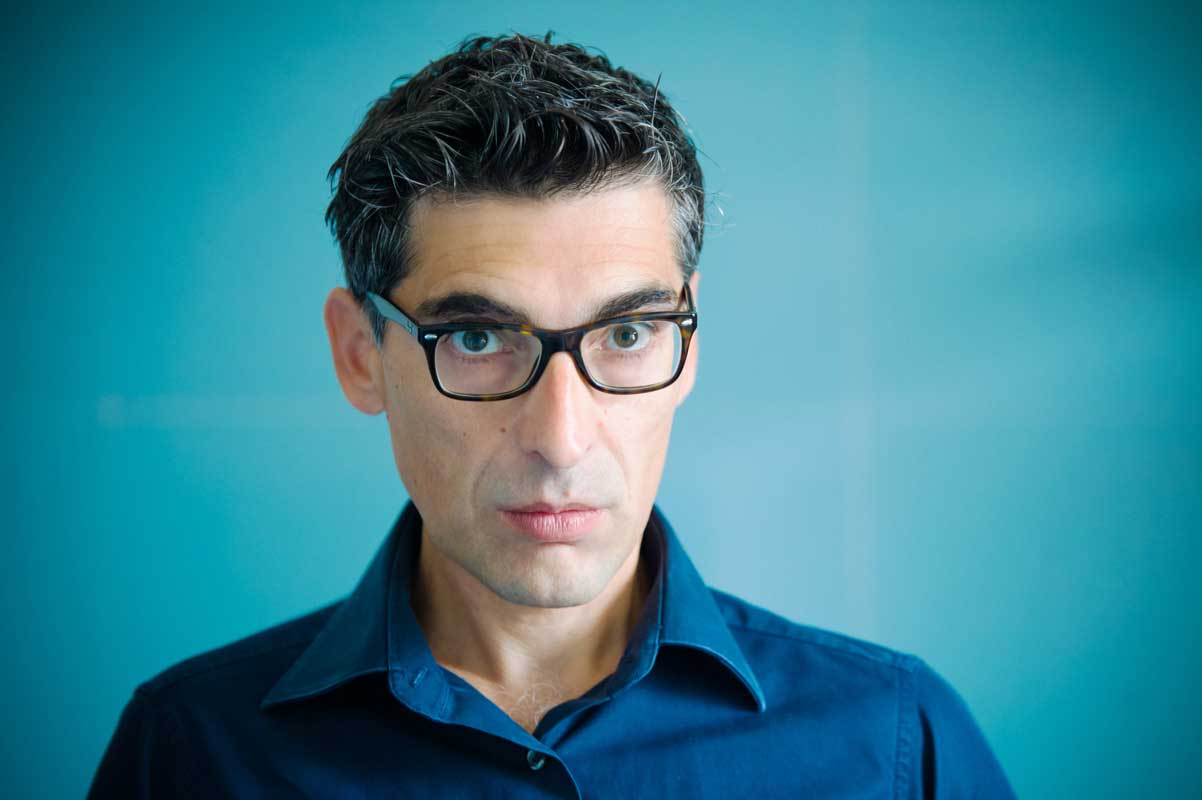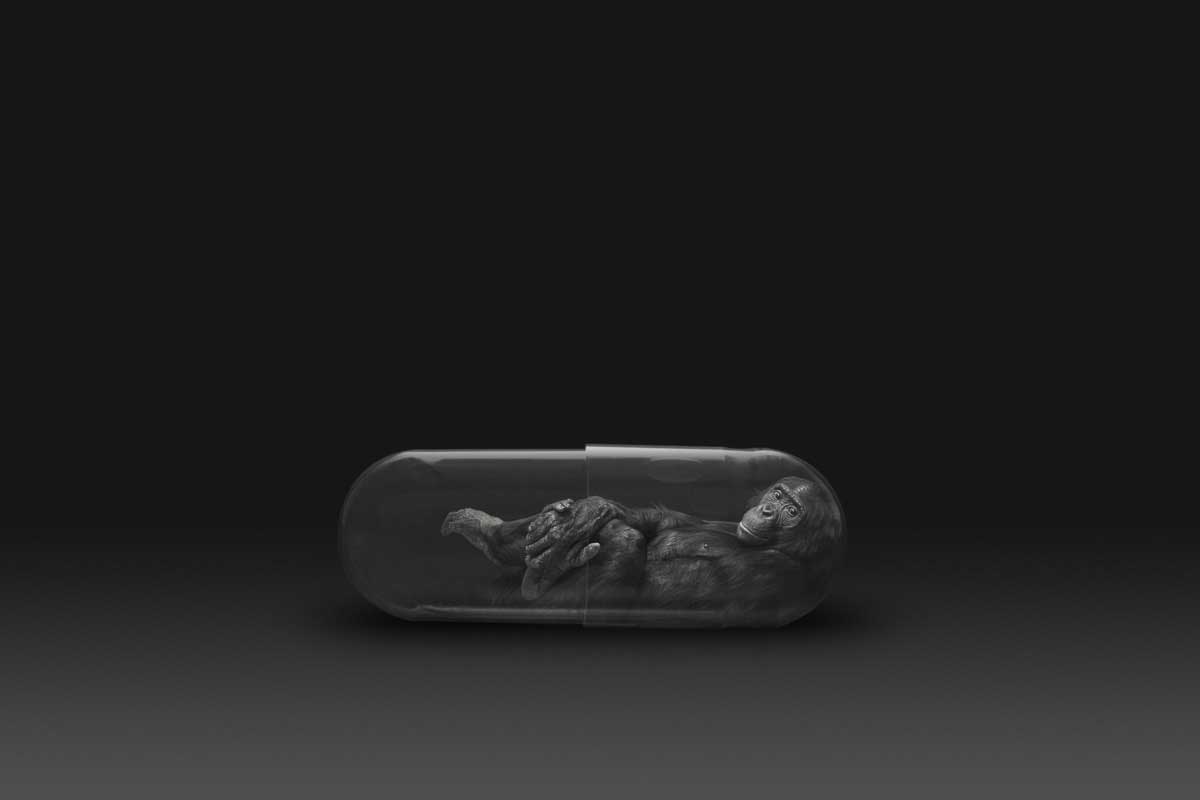Gianluca Micheletti is a professional photographer based in Italy.
He studied at the Italian Institute of Photography in Milan and is currently engaged in still life photography, corporate photography and reportage. Fascinated by existential dynamics, he develops personal projects in re- search and conceptual photography. [Official Website]
Can you explain us the idea or the story behind this image?
This photo is part of a conceptual work composed of 10 images and it is my imaginary project of therapy for the existence threatened by man, responsible for the alteration of everything.
The idea is to insert some primates – they share with humans up to almost 99% of DNA – in safety capsules that will regenerate a form of primordial life, in a future day, after the extinction of the human breed.
Can you explain us what equipment you used for its realization?
The image consists of two photos mounted in post-production. I used a Sony A7 camera for both, with a Nikon 70-300mm lens for monkey photography and a Tamron 90mm Macro for the capsule photo.
Tell us how it is taken from the most technical aspect.
The monkey photo was taken in a zoo all in manual mode, looking for the right compromise between shutter speed and high ISO to not miss the best moments.The photo at the pharmaceutical capsule was taken in the studio, on a black background with continuous lights to simulate, as much as possible, light on the primate in the zoo.
What problems and challenges did you face when you took the shot of this image?
The biggest difficulties I had at the zoo in many ways, such as the lack of light in the rooms, the reflections on the windows (dirty), the many tourists present, shoot without autofocus and obviously the nature of the subject that even if «quiet», capture the right expression was a difficult undertaking.
To carry out this project I spent many hours in the main zoos in Europe, always keeping my concentration high and without losing heart.It was easier to take photos of the capsules even if it required a lot of care and a good knowledge of the still life techniques.
We are talking about the postproduction process. How do you get the final result?
As I already said, this image is the set of two photos and the post production took time.First I retouched the capsule and rebuilt the background to give it a greater sense of «emptiness», then I added the monkey, cut out from the original file. From there began the real work of postproduction …, levels, adjustments, opacity, lights, shadows, shades, reflections, etc …








